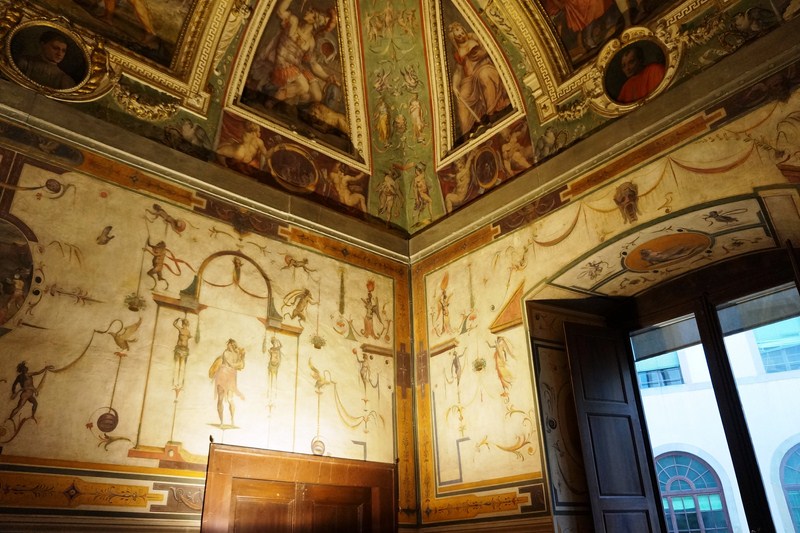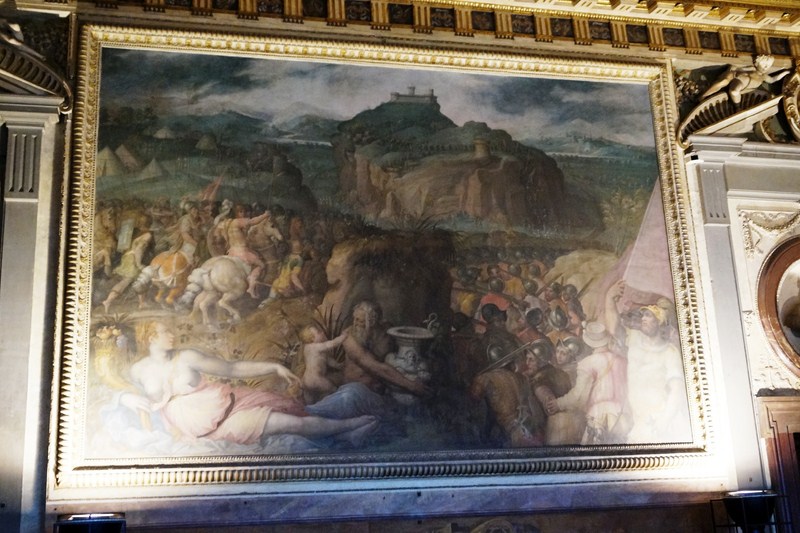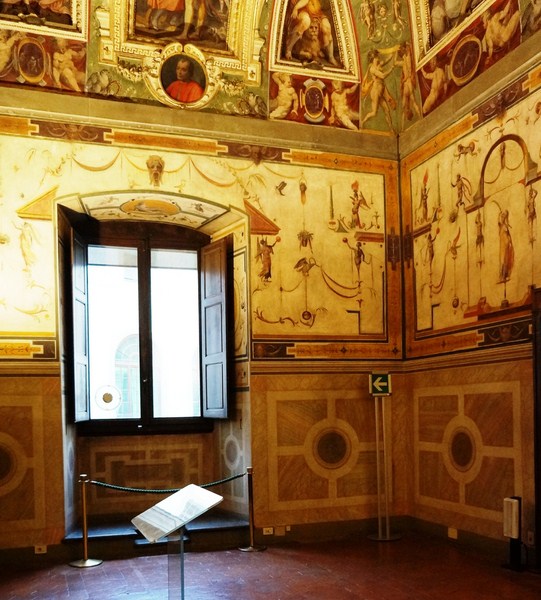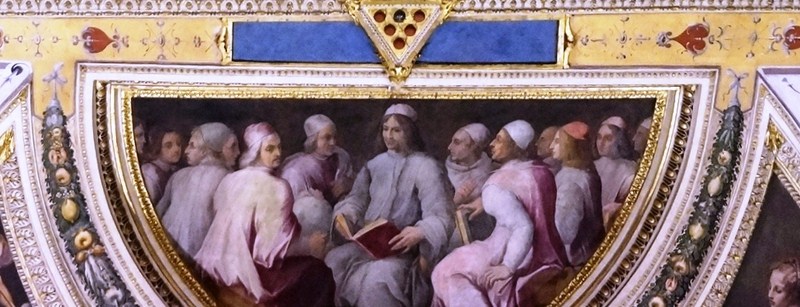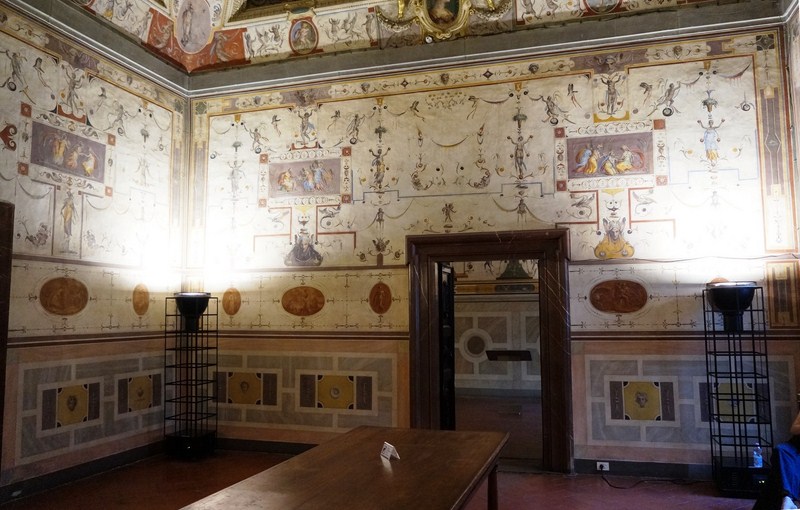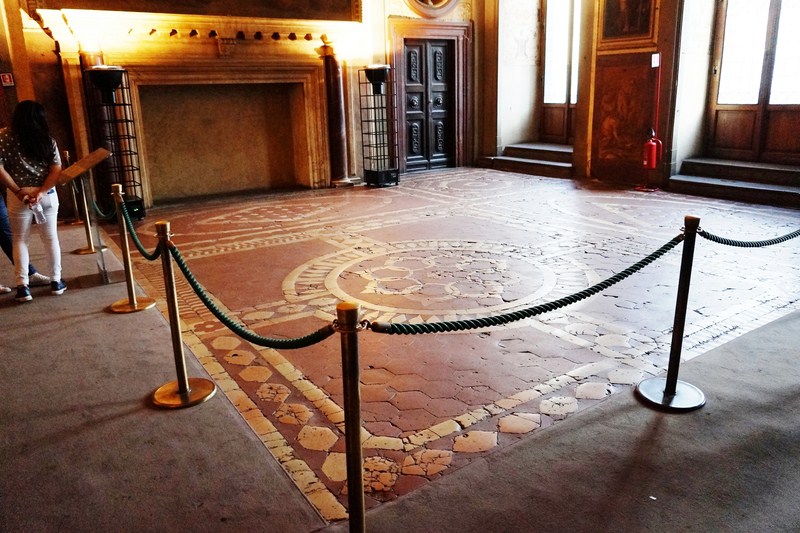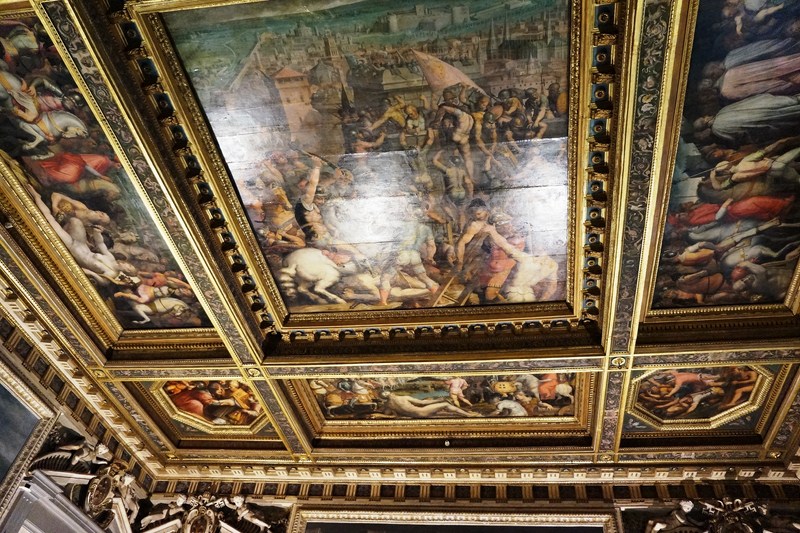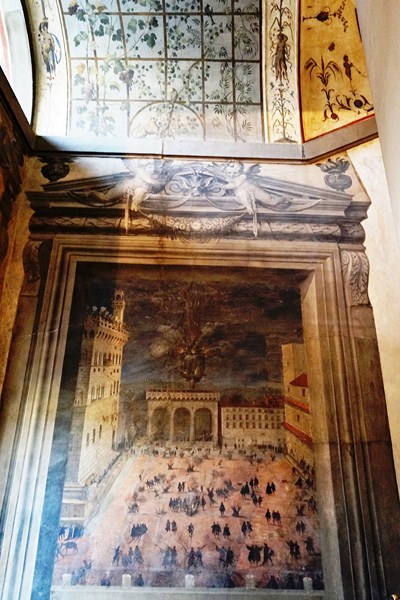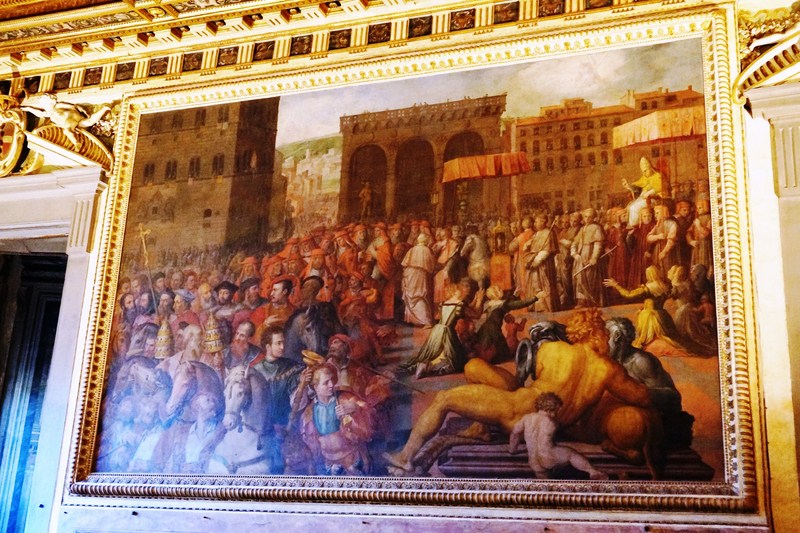The Apartments of Leo X, situated in an extension of the building erected in the mid-16th century on the orders of Duke Cosimo I de’ Medici, was designed and built by Giovanni Battista del Tasso, who partly demolished and partly incorporated the 13th and 14th century offices of the Captain and Executor of the Ordinances of Justice in his work.
Upon the death of Tasso in 1555, his place was taken over by Giorgio Vasari. In accordance with a single, consistent iconographic program devised by the scholar Cosimo Bartoli, Vasari worked simultaneously both on these rooms and on decorating the apartments on the floor above.
The decoration on each one of the rooms in these apartments, dedicated to an illustrious member of the Medici family (Cosimo il Vecchio, Lorenzo the Magnificent, mercenary captain Giovanni dalle Bande Nere, Pope Clement VII, Cosimo I de Medici and Pope Leo X, after whom the apartments are named), depicts their most significant endeavors.
In accordance with a specific program designed to compare the rise to power of the House of Medici (veritable “deities on earth” with the origins of the genealogy of the “deities in heaven”), each one of the rooms is matched in the Apartments of the Elements on the floor above by a room of the same size dedicated to a pagan deity.
Check out “Palazzo Vecchio – Apartments of the Elements“
Stucco work, designed by Bartolomeo Ammannati, was implemented by Leonardo Ricciarelli, Giovanni di Tommaso Boscoli and Mariotto di Francesco. The paintings and frescoes were done by Giorgio Vasari and his assistants Marco Marchetti, Cristofano Gherardi and Giovanni Stradano.
Because they are normally set aside for use as the offices of the Mayor of Florence, some of the rooms in this area are only open to visitors on special occasions but, surprisingly, they were open during our visit, possibly because we visited after office hours.
The Room of Cosimo il Vecchio houses paintings that depict some of the more salient moments and aspects of his success of Cosimo il Vecchio (1389-1464), founder of the main branch of the Medici family.
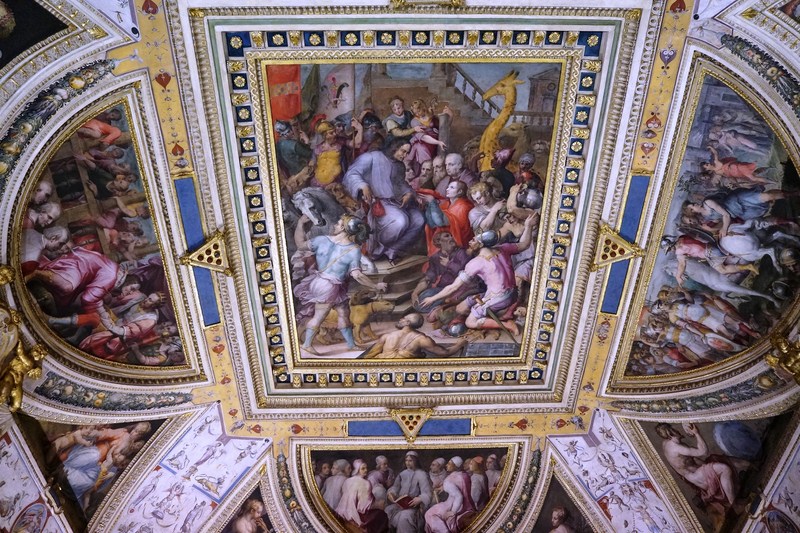
Lorenzo the Magnificent receiving tribute from the Italian and foreign ambassadors, with many precious and exotic gifts
He steered, de facto, the political and economic rise of the city of Florence and laying the groundwork for future Medici power, earning the sobriquet of Pater Patriae (“Father of the Nation”).
Depictions include his triumphant return to Florence (barely a year after being forced into exile by his adversaries) or his role as patron and protector of artists and scholars who also commissioned several majors architectural projects.
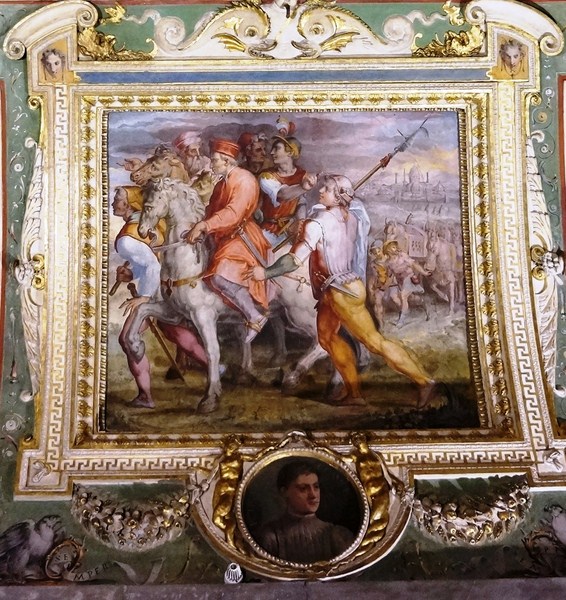
Departure of Cosimo il Vecchio for exile (Giogio Vasari and collaborators, 1556-58). This was the sentence laid down in 1433 by his enemies, who accused him of plotting against the Republic.
The ceiling fresco depicts Cosimo and his entourage’s return from exile, greeted in triumph by the city fathers outside the San Gallo Gate (1434).
The Room of Lorenzo the Magnificent, has a ceiling fresco, done by Giorgio Vasari and Marco Marchetti, with the symbolic depiction of the ambassadors of the most powerful foreign states paying tribute to Lorenzo.
The gifts laid before him include the cardinal’s hat which the pope granted to his son Giovanni, the future Pope Leo X.
Lorenzo de ‘Medici (1449-1492), the son of Piero the Gouty and grandson of Cosimo il Vecchio, was called The Magnificent on account of his exceptional intellectual prowess with which he shaped the era. Patron of the Platonic Academy, author of poetry and prose in the vernacular tongue, sophisticated collector and protector of artists of the caliber of Michelangelo Buonarroti, he influenced the tastes of his age, fostering the development and spread of the Humanist movement of the Florentine Renaissance.
He continued the work begun by his predecessors, monopolizing and consolidating political and economic control over Florence, whilst retaining, at least formally, the institutions of the Florentine republic. Believing that a balance among Italy’s states would keep foreign interference at bay, he enhanced his reputation by promoting peace agreements and alliances.
The Room of Leo X has a ceiling fresco that depicts Pope Leo X‘s allies retaking Milan (1521).
Giovanni de’ Medici (1475-1521), Lorenzo the Magnificent’s son, became cardinal at the age of only thirteen and took the name of Leo X when he was elected to the papacy in 1513. He laid the groundwork for the future Medici duchy of Tuscany and his expansionist drive allowed the Medici to acquire new honors, such as the Duchy of Urbino.
Educated in the cultured and sophisticated circles of his Magnificent father, he imbued the papal court with pomp and splendor, pursuing his predecessor Julius II’s patronage policy to turn Rome into the leading cultural and artistic centre of the early decades of the 16th century.
Apartments of Leo X: Palazzo Vecchio, Piazza della Signoria, Florence, Italy. Tel: +39 055 276 8325. Open daily, 9 AM – 7 PM (except Thursdays, 9 AM – 2 PM). Admission: €6.00. Combined ticket with Cappella Brancacci: €8.00.


